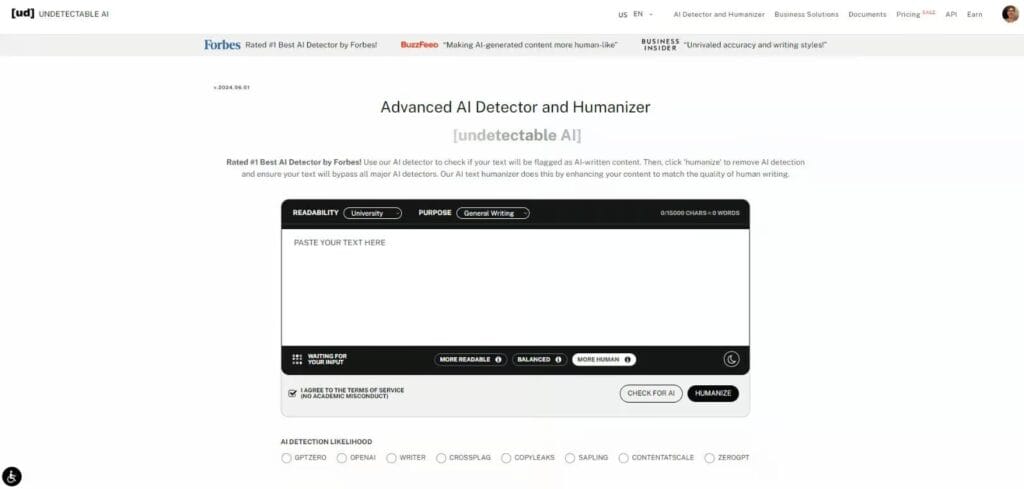Planning to write an essay or maybe a really engaging short story? Writing can be both fun and rewarding, especially when you know how to do it right.
Words are your canvas, but understanding the technical aspects of writing—like grammar and punctuation—brings your thoughts to life.
The semicolon, in particular, is a small but mighty writing essential. But what is it exactly, and how do you use it?
The power of a semicolon lies in its ability to connect your thoughts, add rhythm to your ideas, and make your writing much more polished.
So whether you’re breaking up a list or linking two closely related points, knowing how to use a semicolon correctly can elevate the way you write.
In this guide, you’ll learn the basics of this age-old punctuation mark. We’ll also include some semicolon examples and tips to help you get the hang of it.
Unlock the strength of the semicolon; turn those good sentences into great ones.
What is a Semicolon?
The origin of the semicolon goes way back to 1494. It was born in Venice during a time of exploration of science and the arts, including literature.
Punctuation marks were constantly being invented, used, and discarded.
Among the humanists of the Renaissance was Aldus Manutius. He was a Venetian printer who created the semicolon.


Never Worry About AI Detecting Your Texts Again. Undetectable AI Can Help You:
- Make your AI assisted writing appear human-like.
- Bypass all major AI detection tools with just one click.
- Use AI safely and confidently in school and work.
His intention? To combine the comma and colon, he thought of it as a pause that’s longer than a comma but shorter than a colon.
Manutius originally used the semicolon to separate items in lengthy lists. It helped readers process information more quickly, raising demand for more of his material.
Over time, the semicolon gained popularity among Italian scholars. And eventually, this made its way to Paris and London.
Today, the semicolon is a necessary (but often misunderstood) part of punctuation, with rules established for its proper use.
While its origins may seem rooted in history, its purpose remains timeless: to create clarity and flow in writing.
Why Use a Semicolon?
The main purpose of the semicolon is to act as a bridge between two closely related ideas.
Instead of using a comma with a conjunction (like “and” or “but”), a semicolon lets you connect two complete sentences in a more direct way.
This punctuation mark emphasizes that there’s a relationship between ideas, making sure that these are able to go together more smoothly.
Let’s say, for instance:
- Without a semicolon: The rain stopped. The sun came out.
- With a semicolon: The rain stopped; the sun came out.
Adding a semicolon in a sentence maintains its clarity while avoiding the sudden abruptness of a period.
You can also avoid making your statements unnecessarily complex by having to add a coordinating conjunction.
It’s a tool that gives balance and a sort of elegance to your writing, giving your sentences rhythm and cohesion.
When to Use a Semicolon
The semicolon is actually more versatile than you might think. Here are the most common applications where it could be used effectively, and semicolon sentence examples using these:
To Link Independent Clauses Without Conjunctions
When two complete sentences are closely related, known as independent clauses, a semicolon can connect them without needing a conjunction.
- Example: She loves hiking; he prefers biking.
It emphasizes the relationship between the two sentences without the need for “and” or “but.”
To Separate Items in Complex Lists
In lists where items already include commas, semicolons can clearly divide each entry better.
Example: We visited Rome, Italy; Paris, France; and Tokyo, Japan.
Without using semicolons, the sentence could be easily misread.
To Connect Related Ideas
A semicolon can easily connect related ideas, emphasizing their close relationship without complicating the sentence.
Example: She studied hard for the exam; her dedication paid off with top marks.
As you can see, their connection is shown in a subtle but impactful way.
Semicolons can also appear in creative writing, like in poems, to link two verses. Their flexibility makes them quite popular for adding depth to anything you plan to write.
How to Use a Semicolon with Conjunctions
Though we’ve shown you that semicolons can replace conjunctions, they can also work alongside them to provide emphasis in specific contexts. Just remember the semicolon itself serves as the connector, so adding a conjunction would be redundant.
- Incorrect: I wanted to go for a walk; and it was a beautiful day.
- Correct: I wanted to go for a walk; it was a beautiful day.
Using a semicolon in a sentence with conjunctions works really well for longer and more intricate sentences. Here are more semicolon examples with proper use of conjunctions:
Before Conjunctive Adverbs
When a word like however, therefore, or nevertheless connects two independent clauses, place a semicolon before it.
- Example: The deadline was tight; nevertheless, the team completed the project.
This approach highlights the transition and keeps proper grammar.
In Complex Sentences with Coordinating Conjunctions
If your sentence contains multiple commas and a conjunction (like and or but), a semicolon can help express their relationships more clearly.
- Example: The team included Alice, a designer; Bob, a writer; and Sarah, a developer.
Here, the semicolon separates the list of team members in a more direct and efficient way, while still avoiding confusion.
Semicolons vs. Commas: Key Differences
It might be easy to mistake semicolons for commas at first glance, but they serve completely different purposes. They differ in the following ways:
Independent Clauses
A semicolon connects independent clauses without a conjunction. This shows a strong relationship between the ideas while keeping the sentence concise.
- Example: I love coffee; it keeps me focused.
In this case, the semicolon acts as a bridge by linking the two separate but related thoughts into one coherent sentence.
Meanwhile, a comma needs the support of a coordinating conjunction (like and, but, or, yet) to connect the independent clauses.
- Example: I love coffee, and it keeps me focused.
Without the conjunction, a comma would create a grammatical error known as a comma splice.
Lists
When listing items, commas work well in simple scenarios:
- Example: We visited New York, Los Angeles, and Miami.
However, if the items on the list already contain commas – such as when you include cities and their states – semicolons step in to avoid confusion.
- Example: We visited New York, New York; Los Angeles, California; and Miami, Florida.
In this case, semicolons make it easy to see where one item ends and another begins.
While commas are more common, semicolons are crucial in situations where you need to be more specific about what you’re conveying.
Semicolons vs. Colons: When to Use Each
Semicolons and colons are often confused because both can link ideas.
You might even think that they were created at the same time, but the semicolon is actually older than the colon.
With that said, their roles quite differ. Think of the semicolon as a connector and the colon as an introducer.
As we’ve shown in previous semicolon examples, a semicolon shows how connected two related independent clauses are.
Two ideas are so intertwined that separating them with a period would feel abrupt.
And then there’s the colon. A colon introduces information that elaborates on or explains the preceding clause. Its goal is to draw attention to what follows.
- Example: The recipe requires three ingredients: eggs, milk, and flour.
In this example, the colon sets up the expectation of what ingredients you’ll need.
Another key difference is that a semicolon goes before the list, quotation, or explanation.
- Semicolon example: I was torn; the decision was difficult.
- Colon example: There was only one choice: to act quickly.
Taking the time to understand these punctations can be like light and day when it comes to your writing quality.
Common Mistakes with Semicolons
Semicolons are powerful tools, but they’re often misused. Avoid these common errors to keep your writing looking sharp:
Using Semicolons Instead of Periods
It’s easy to get carried away with semicolons, but they shouldn’t replace a period to break up unrelated ideas. If the clauses are not closely related, a period is the better choice.
- Incorrect use of a semicolon in a sentence: She loves baking cookies; she also enjoys hiking.
- Correct: She loves baking cookies. She also enjoys hiking.
In this case, using a period is more appropriate because the ideas are separate.
Using Semicolons to Avoid Run-On Sentences
A common mistake is to join two independent clauses without appropriate punctuation.
- Incorrect: She loves tennis; but she never practices.
- Correct: She loves tennis; she never practices.
- Also correct: She loves tennis, but she never practices.
The conjunction “but” should not be preceded by a semicolon; instead, a comma is needed, or the semicolon should be removed.
Using a Semicolon with a Fragment
A semicolon should only connect two complete sentences. If one side of the semicolon isn’t an independent clause, the sentence is wrong.
- Incorrect use of a semicolon in a sentence: I went to the store; and bought milk.
- Correct: I went to the store; I bought milk.
In the incorrect example, “and bought milk” isn’t a complete sentence, so a semicolon doesn’t belong there.
Replacing Commas in Simple Lists
Semicolons are unnecessary in lists that are direct to the point and have no internal punctuation.
- Incorrect use of a semicolon in a sentence: The colors were red; blue; and green.
- Correct: The colors were red, blue, and green.
Overusing Semicolons
While semicolons are useful, overloading a paragraph with them can make your writing feel cluttered.
- Incorrect use of a semicolon in a sentence: The cake was delicious; it had frosting; and it was chocolate.
- Correct: The cake was delicious; it was chocolate and had frosting.
Limit your use of semicolons to situations where they genuinely enhance your writing.
Examples of Proper Semicolon Usage

Here are more when to use a semicolon examples to emphasize how to use this punctuation mark right in different contexts:
- A semicolon can make a compound sentence without the need for a conjunction.
Example: The weather was perfect; we decided to go hiking.
- For lists that also contain commas, semicolons can separate each of the entries more clearly.
Example: On the menu were spaghetti with meatballs, a classic Italian dish; sushi rolls with fresh tuna and avocado; and chocolate mousse, a decadent dessert.
- When two lengthy sentences are related, semicolons can allow for a seamless flow.
Example: The sun set behind the mountains, casting a golden glow over the landscape; the stars began to emerge, lighting up the night sky.
- Semicolons can also be used before transitional phrases (such as “however,” “therefore,” “for example,” etc.) when they are used to connect two independent clauses.
Example: He’s an excellent writer; for example, his recent article won an award.
- Use semicolons to connect two that are related but present contrasting ideas.
Example: She loves hiking in the mountains; he prefers relaxing on the beach.
- Semicolons enhance parallel structures, making related ideas stand out.
Example: The athlete trained daily, pushing her limits; she rested every weekend, recharging for the week ahead.
- Semicolons can add rhythm and depth to creative writing by linking reflective clauses.
Example: The river flows endlessly; its song a whisper to the ancient trees.
These are just some examples that illustrate how semicolons enhance readability, clarity, and style when used correctly. With some practice, they’ll become a seamless part of your writing toolbox.
Tips for Mastering Semicolon Usage
The semicolon is a small punctuation mark, but it can do wonders for your writing when used just right. Here are some key tips for using a semicolon in a sentence.
- Use it to connect related independent clauses: Use a semicolon only when both parts can stand alone.
- Avoid overusing semicolons: Aim for balance – one or two in a piece is usually enough.
- Use it in lengthy lists: If you have a list with items that already include commas, a semicolon helps keep things clear and easy to read.
- Know when not to use a semicolon: If the clauses aren’t closely related or don’t make sense together, don’t use a semicolon.
The semicolon is a simple tool, but when used properly, it makes your sentences clearer and more engaging. Keep practicing, and you’ll master semicolons in no time.
Using AI to Improve Sentence Structure

AI has become a huge asset for content creation these days.
Tools like ChatGPT can assist with brainstorming, organizing ideas, and even writing content quickly.
If you’re stuck or need a little creative push, AI can help you get started.
However, while these tools are great for generating ideas, they can sometimes create text that doesn’t feel entirely natural.
That’s where the Undetectable AI Humanizer comes in.
Undetectable can take AI-generated content and refine it to be authentic.
It smooths out awkward phrasing and corrects any odd patterns in punctuation or flow.
It also helps to make your writing sound more conversational while keeping things polished.
When you’re using AI to streamline your writing process, having a humanizer on hand ensures that your content still feels like you. Try it now with a single click!
Frequently Asked Questions About Semicolons
Can You Use a Semicolon Before “And”?
Yes, the conjunction “and” can be placed alongside semicolons in a complex list.
When the items in the list contain commas themselves, the semicolon separates the items for clarity, and then you can use “and” before the final item.
Using a semicolon before “and” to connect independent clauses, however, is considered outdated (but use one if it makes your sentence structure better).
When Should You Avoid Using a Semicolon?
If the two independent clauses you want to connect aren’t closely related, it’s better to use a comma or a period.
How Do Semicolons Affect the Tone of Writing?
Semicolons can make your writing look sophisticated. They help you combine related ideas without sounding too formal.
They’re also great for making your writing flow smoothly while still keeping it clear.
Conclusion
With our various semicolon examples, it’s clear that knowing how to use this important punctuation mark is one way to refine your writing.
It can improve clarity, flow, and quality when used correctly.
But with the power of AI writing tools, and Undetectable AI by your side, you can make the writing process more streamlined.
AI can help you with your ideas, but using tools like an AI humanizer ensures that your final piece stays authentic and professional.
AI tools are within reach, so don’t be afraid to embrace technology to take your writing a step further!
